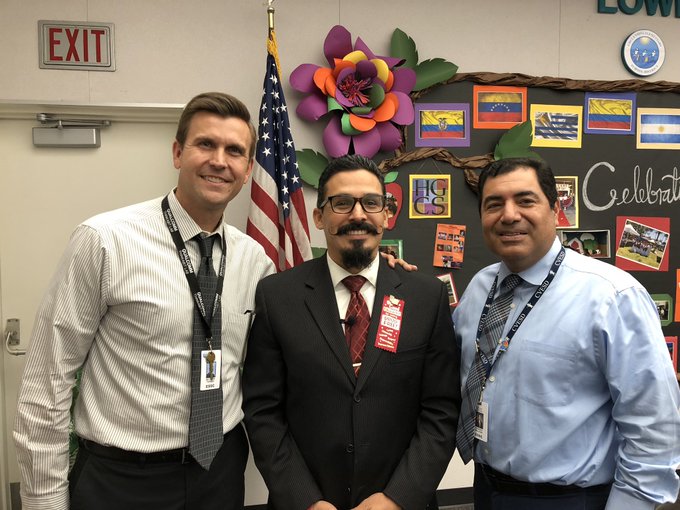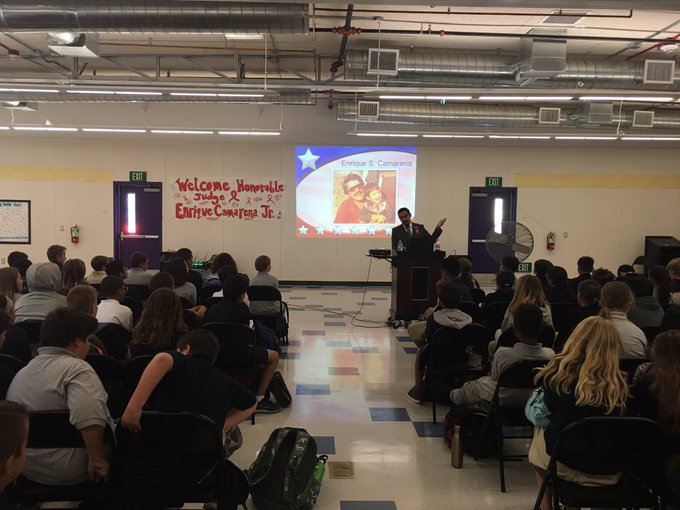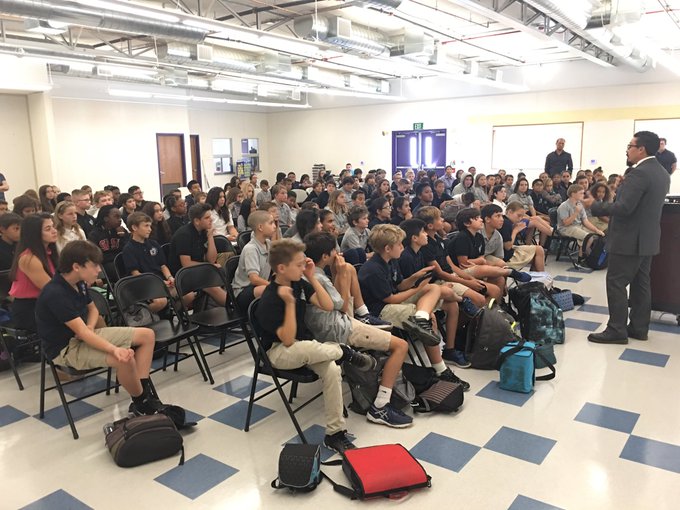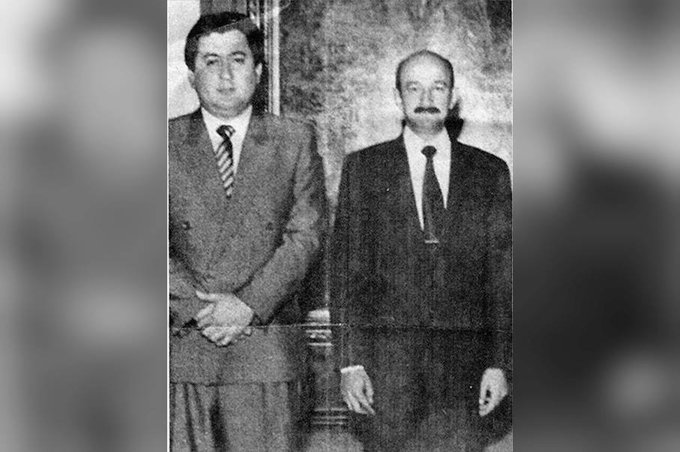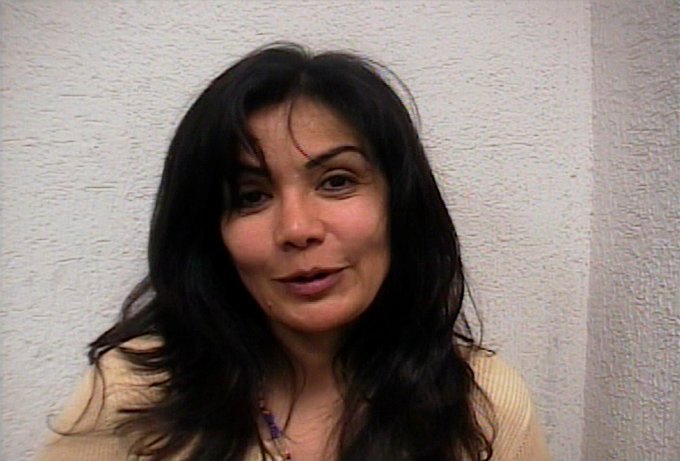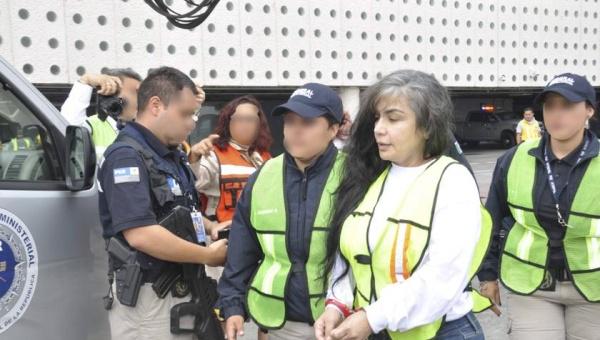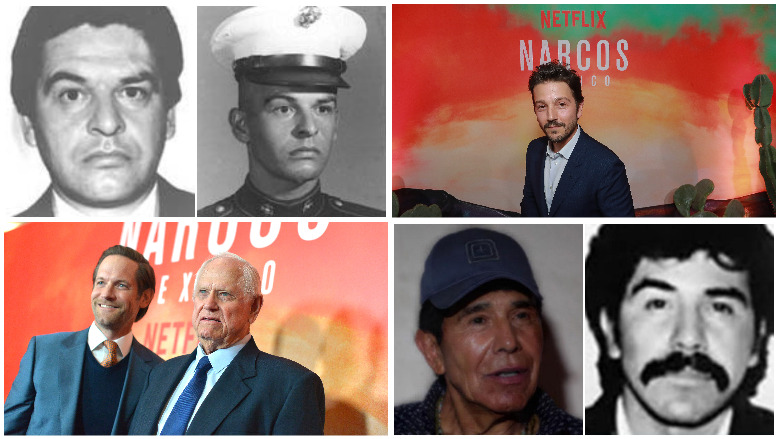
FBI/Getty Is Narcos: Mexico accurate?
Narcos: Mexico traces the rise and (the begin of) the fall of the Guadalajara cartel, shifting the “drug war” from Colombia to Mexico and the U.S. border. (Be forewarned that this article contains spoilers.)
The series is certainly popular, and the acting feels authentic. However, what is the accuracy of Narcos: Mexico? Are the characters real? Are the narratives? The answer is that, generally, yes, the series stays true to the broader sketch of the Guadalajara cartel and the characters leading and interacting with it. However, some scenes and dialogue are fictionalized and, at times, the series veers away from known facts.
There is a disclaimer at the beginning of the series warning that, while the season is “inspired by true events,” some characters, scenes, businesses and so on have been fictionalized for dramatic purposes.
Here’s what you need to know:
Ernesto Fonseca Carrillo AKA Don Neto

Don Neto’s full name is Ernesto Fonseca Carrillo.
Ernesto Fonseca Carrillo, known as Don Neto, is one of the series’ most interesting and colorful characters. An aging co-founder of the Guadalajara cartel, he’s skeptical at first but proves to be a loyal comrade in arms to cartel chief Felix Gallardo.
Don Neto is real, and his true story closely tracks with the Netflix storyline.
In real life, Don Neto was sent to prison for decades as a result of DEA agent Kiki Camarena’s death, but, in 2016, he was placed on house arrest in what Mexican News Daily described in 2016 as luxury digs. He had already served 31 years of a 40-year sentence at that time, and, Fox News reports that, in 2017, he was granted early release by an appellate court in a ruling that the network said would apparently allow Don Neto to leave his house.
In Narcos: Mexico, Don Neto is played by actor Joaquin Cosio.
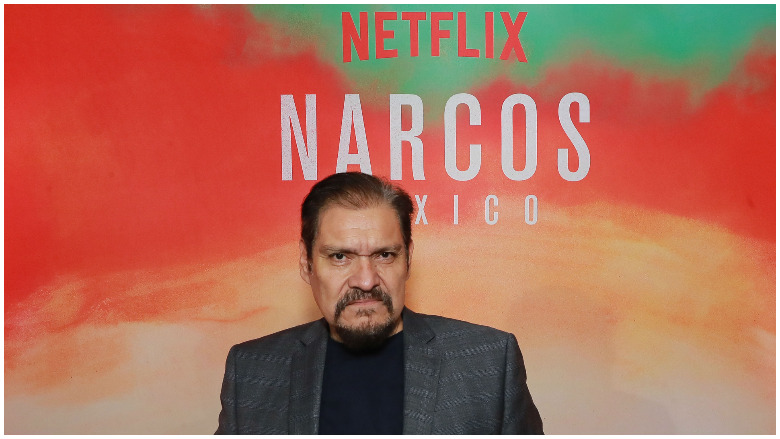
Don Neto is a key character in Narcos: Mexico
Don Neto’s cartel roots run deep. According to El Pais, he is the uncle “of the brothers Amado Carrillo Fuentes The Lord of the Skies and Vicente Carrillo Fuentes, leaders of the Juarez Cartel.”
In real life, Don Neto was already a leader in a Sinaloan organization of drug traffickers before he helped Gallardo unite various fractious groups into one unit. According to the book, Mexico: Narco-Violence and a Failed State? By George W. Grayson, Ernesto Fonseca Carrillo was called “The Godfather” and “pioneered large-scale poppy production and trade” in Sinaloa. He also mentored Rafael Caro Quintero, who is described in the book as a “shrewd and youthful entrepreneur who converted Mexican marijuana from second-rate weed to the choice of connoisseurs by perfecting a seedless variety of the plant (sinsemillas.)”
According to CC News, Don Neto was was captured in 1985 – four years before Gallardo – in Puerto Vallarta, Mexico. The death of Camarena was planned at a Christmas Party in 1984 that Don Neto attended, the site reports.
“Don Neto confessed that he and Caro Quintero had made the decision to kidnap Camarena,” journalist Anabel Hernández told BBC.
Miguel Ángel Félix Gallardo
The man most responsible for the rise of the Guadalajara cartel was the clever and ruthless Miguel Ángel Félix Gallardo – in real life as well as on Netflix.
According to BBC, Gallardo wasn’t actually the first drug lord to bring cocaine from Colombia to the United States by way of Mexico. That distinction belongs to “his mentor and former head of the Sinaloa band, Pedro Avilés,” who was slain in the 1970s, the news site reports.
BBC reports that it’s true that Gallardo – known as “El Padrino” – formed an alliance with Pablo Escobar in Colombia to traffic cocaine through Mexico; “By the end of the 1980s, Félix Gallardo’s alliance with Escobar handled 60% of the cocaine consumed in the United States via Mexico,” the news site reports.
El Mundo reports that Gallardo was indeed a member of the Federal Judicial Police who was born in Sinaloa and later “was the escort of the children of the former governor of the state.” He did, in fact, start trafficking marijuana (and also opium) before making his deal with Escobar.
He was captured in 1989.
Where is he today? He’s 72-years-old, and he’s serving a 37-year sentence in a Mexican maximum-security prison. He’s been in prison since 1989, when he was captured in his bathrobe in what is known as Operation Leyenda. He had been sought since the death of Kiki Camarena, but he evaded authorities for five years.
By 2011, Gallardo’s family told a Mexican court that his health was failing. According to The Washington Post, the family members claimed Felix Gallardo has “cataracts, deafness, ulcers and a hernia.”
“For more than three years, without any justification, prison authorities have kept him segregated, isolated and without contact with other inmates, and have prevented him from participating in any physical, sports or educational activities,” the drug lord’s family wrote to the court, The Post reported.
How brutal was Felix Gallardo during his prime? According to The Post, “he is reputed to have punished a subordinate’s alleged betrayal by killing the subordinate’s children, cutting off the head of his wife, and sending the head to him in a box.”
In March 1985, the DEA recovered the body of Kiki Camarena, 37. According to El Pais, Camarena’s “skull, jaw, nose and cheekbones were crushed with a tire iron. As he lay dying, a cartel doctor was ordered to keep him alert by administering drugs.”
According to The Los Angeles Times, Camarena’s murder “led to the fall of Gallardo and his close associates” and the fracturing of their cartel.
Amazingly, Gallardo was only recently re-sentenced in the death. Gallardo was sentenced to 37 years in 2017 for the death of Camarena by a Mexican court (as well as for the murder of Alfredo Zavala, a Mexican pilot), according to The LA Times. A retrial was ordered. Zavala was helping Camarena in his “undercover operations,” The Times reported. Gallardo was originally sentenced to 40 years in prison in the Camarena death. Key figures in the Camarena death had filed appeals of their sentences. Gallardo was ordered to pay about $1.17 million in reparations, according to The Associated Press.
“We coordinated with the Mexican national police … and we started to do wire intercepts and we tracked him to a residence in Guadalajara — he never left Guadalajara, that was his power base,” Mike Vigil, former chief of international operations for the DEA, told Business Insider, of the capture of Gallardo.
A 1989 New York Times article on Gallardo’s arrest says that authorities also rounded up an entire city police force for questioning about ties to him. It’s true that Gallardo was close to a Mexican governor, Antonio Toledo Corro, according to The Times, and was photographed at a wedding with him.
According to the book U.S. Border Security: A Reference Handbook, by Judith Ann Warner, Felix Gallardo started working as a family bodyguard for Mexican Governor Leopoldo Sanchez Celis. Gallardo was able to use those connections to build his cartel. Gallardo was a godfather to Celis’s son, who was murdered and tortured by a rival cartel. He was once a federal police agent and was born on a Sinaloan ranch. He was also a supporter of the Contras.
Kiki Camarena
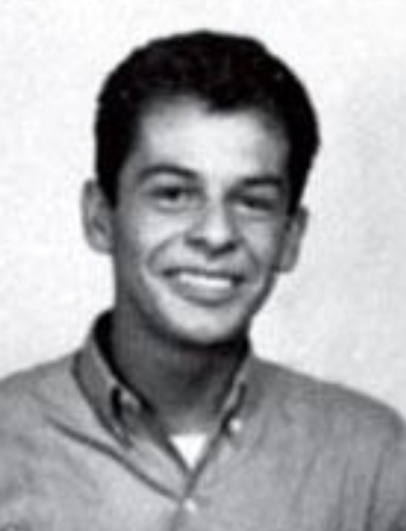
Kiki Camarena
In the first episodes of Narcos: Mexico, Kiki Camarena (played by Michael Pena) and Felix Gallardo (played by Diego Luna) are juxtaposed as twin protagonists: One trying to solidify the drug trade and the other trying to stop it in an era when the Drug Enforcement Administration (DEA) was still an underappreciated agency headquartered over a strip club.
Camarena opens the show in a scene that shows he’s been abducted.
The real Kiki Camarena was born Enrique (Kiki) S. Camarena on July 26, 1947, in Mexicali, Mexico. He was raised in California, graduating from Calexico High School in Calexico, California in 1966. He was also a veteran, having joined the U.S. Marine Corps in 1968, according to a DEA biography of him.
Camarena served in the Marines for two years, was a firefighter and police officer and deputy sheriff in California, and then joined the DEA in 1974. Actor Michael Pena, who played Kiki in Narcos, researched the role of Kiki Camarena for Narcos: Mexico in part by speaking with the agent’s widow.

DEAKiki Camarena (shown above in this photo from the DEA) was known as a family man, who left behind a wife and three children.
“I wanted to find out what made the guy tick, and I did a lot of research and thank God I spoke with Mika (Camarena’s wife),” he told Newsweek. “What she was able to tell me was that he was a guy that just wanted to do good. He was a Marine. He worked locally. He was a police officer, and then he became part of the DEA. He was the kind of guy who just wanted to keep the streets safe. He saw the possibility and the signs of an empire being built—this narcotics empire—and he wanted to put an end to it because he saw what it could possibly become.”
In Narcos: Mexico, Mika Camarena is depicted as a loyal and loving wife to DEA agent Kiki Camarena. She is pregnant throughout part of the show and living with him in Mexico with their family while his job increases in danger. In real life, Camarena’s wife was called Mika, and she is the mother of his three children.
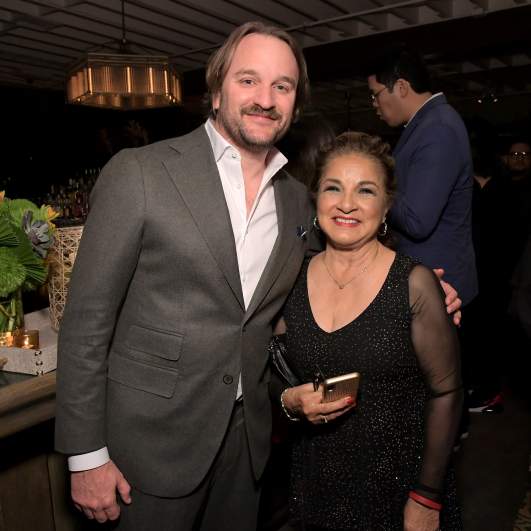
Lenny Jacobson and Mika Camarena attend the Netflix Original Series “Narcos: Mexico”, special screening at LA Live in Los Angeles, CA on November 14, 2018 in Los Angeles, California.
Mika Camarena, whose given name is Geneva Camarena, was high school sweethearts with Kiki. According to The San Diego Union-Tribune newspaper, after his death, she “formed the Enrique S. Camarena Foundation in 2004 with the help of retired DEA agents and her oldest son, Enrique, a deputy district attorney working in the South Bay. She dedicates her time to promoting drug awareness in schools and communities nationwide.”
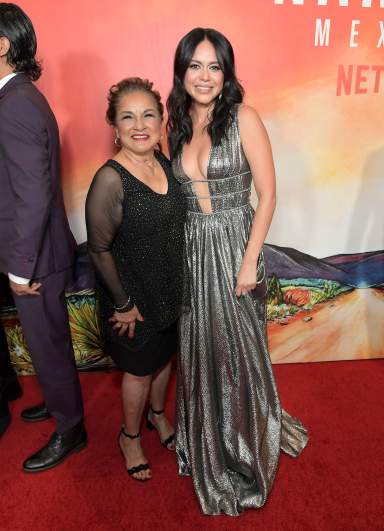
Alyssa Diaz and Mika Camarena attend the Netflix Original Series “Narcos: Mexico”, special screening at LA Live in Los Angeles, CA on November 14, 2018 in Los Angeles, California.
She told the newspaper, “Since retiring as a skin-care consultant, I can spend more time as president of the foundation. We sell bronze life-size busts of Kiki that are unveiled in schools and libraries throughout the country, not just in San Diego. The money goes toward scholarships. Each year we issue six scholarships to high school seniors throughout the nation. We also speak in favor of the Red Ribbon campaign and drug awareness. We are helping law enforcement get the word out about drugs to our youth, parents and schools.”
Kiki Camarena’s son, Enrique Camarena, is now a judge in California after serving as a deputy district attorney for years. He decided not to become a police officer because his dad thought it was too dangerous, according to NBC San Diego, which quoted him as saying, “I grab a little bit from one supervisor, I grab a little bit from another, and added on to me to become who I am today.”
He told NBC San Diego of his dad, “You know, I think about him every day. And so for me, it’s still a little bit about the legacy of duty. And that’s what I’ve been doing up until yesterday. And I’m going to be serving my county, serving this community in a different way.”
Kiki Camarena spent three years in Calexico for the DEA before he was assigned to the agency’s Fresno office and then to Mexico, where he worked out of its office in Guadalajara. He spent four years in Mexico tracking the country’s drug dealers (the drugs of choice were marijuana and cocaine back then.)
By 1985, which is when Narcos: Mexico roughly starts, “he was extremely close to unlocking a multi-billion dollar drug pipeline,” the DEA says. He was about to expose the operation when he was kidnapped on February 7 while he went to have lunch with his wife.
“Kiki was surrounded by five armed men who threw him into a car and sped away. That was the last time anyone but his kidnappers would see him alive,” reveals the DEA, adding that he likely died two days later.
James Kuykendall

Actor Matt Letscher and James Kuykendall attend Netflix’s Narcos: Mexico Season 1.
There really was a guy named James Kuykendall who was Kiki Camarena’s DEA supervisor.
In later years, James Kuykendall, the DEA supervisor of Camarena in Guadalajara, has spoken out about the CIA and the Kiki Camarena murder. Kuykendall is quoted in the book Whiteout: The CIA, Drugs, and the Press by Alexander Cockburn. The book alleges that DEA officers investigating Camarena’s death “knew that the drug agent’s murder was a joint operation between the drug cartel and the DFS, an agency with intimate ties to the CIA.”
Kuykendall said, “The CIA didn’t give a damn about anything but Cuba and the Soiets. Indirectly, they (the CIA) have got to take some of the blame.” He alleged the CIA “protected the DFS for decades,” and stated “The DFS just got out of hand.” He attended the Narcos: Mexico premiere.
Rafael Caro-Quintero

FBIRafael Caro-Quintero.
Rafael Caro-Quintero was sentenced to serve 40 years in prison for DEA Agent Kiki Camarena’s death in the 1980s, but in 2013, he was freed after a Mexican court, on appeal, ruled that he should have been tried in state court, not federal court. In only days, though, the Mexican Attorney General issued an order for the arrest of Rafael Caro-Quintero. He subsequently disappeared, and he remains at large today.
In 2018, The Huffington Post described Rafa’s life on the run: “Hunted by Mexican and American authorities, he never sleeps in the same spot twice, according to his guards. His bed is a sleeping bag, his roof the canvas of a tent. During the day, he haunts the mountains like a ghost, his head perpetually craned toward the sky, scanning for the drones that search the impassable mountains for signs of life.”
The U.S. government is offering millions of dollars in reward money for his capture.
It’s true that, as the Netflix series shows, Rafa’s growth of seedless marijuana helped fuel the cartel’s growth. However, in the book Desperados: Latin Drug Lords, U.S. Lawmen, and the War America Can’t Win, author Elaine Shannon writes that other growers had come up with sinsemilla first. Still, she notes, Caro Quintero dramatically increased the drug’s production and reach.
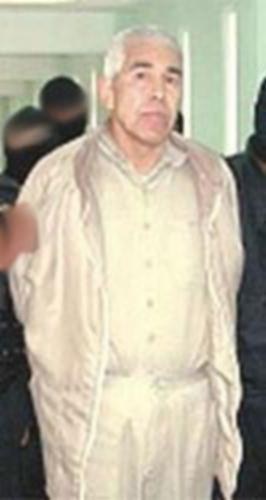
FBIRafael Caro-Quintero, known as Rafa
Caro Quintero “realized that cheap Mexican labor could be used to grow sinsemilla on a grand scale,” and he and Don Neto “supervised the cultivation of thousands of acres of irrigated desert using commercial agricultural techniques,” she wrote.
According to the book, Rafael Caro Quintero was “the youngest and most audacious of the lot, who captured the imagination of the Mexican peasantry” like Robin Hood or Pancho Villa. The book says that Rafael Caro Quintero “transformed Mexican marijuana from common weed to the smoke of connoisseurs” but didn’t invent it. The book credits growers in “California and Oregon” with pioneering the technique that “yielded extraordinarily potent marijuana, called sinsemilla ‘without seeds'” but said they only “worked tiny plots,” and Caro Quintero spotted the potential and took this to a “grand scale.”
He has given other interviews on the run, now denying that he killed Camarena. In one detailed interview, he explained his background, his ties to El Chapo, and claimed he had given up drug trafficking. “I’m not involved in any such problems and less involved in a war. I’m struggling to fix my problem … Imagine, with almost 29 years in prison, would I want more trouble? I WANT PEACE,” he claimed in the interview.
Guillermo González Calderoni
Calderoni is the tough guy Mexican law enforcer, both in real life and in the Netflix series. It appears at first like he’s the rare good guy in a pool of corruption so deeply embedded that the government has basically become synonymous with the cartel. However, at the end of season 1, we don’t see Calderoni in such a simplistic light.
He’s not binary; he’s not all bad, and he’s not all good, and, for the Americans, he sometimes served a purpose.
Was Calderoni real? Yes, he’s based on a real-life person. However, as with many of the characters in Narcos: Mexico, the series takes some liberties with the true facts, fictionalizing scenes. In Narcos: Mexico, Calderoni is played by Julio César Cedillo, a Mexican actor. However, the basic character sketch holds true to the real man. In the photo above, he is on the left with Mexican President Carlos Salinas.
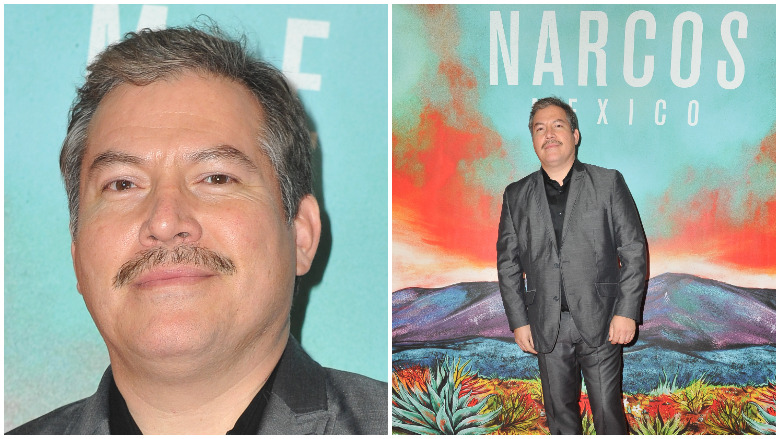
GettyGuillermo González Calderoni in Narcos: Mexico is played by Julio César Cedillo (pictured above).
In an extensive profile on Calderoni, GQ describes the real man as a “Mexican cop, a killer, a narc, a drug boss, a billionaire.” You can see a photo of the real Calderoni with that article here.
GQ colorfully describes Calderoni as “a peacock of a man, dressed nattily in fine fabrics and handmade boots, quick eyed and fluent in English, Spanish and French.” The article says Calderoni was “a federale on the border. Soon he was a comandante. He took a million-dollar contract from one drug lord to kill another. (The FBI unknowingly helped him with this murder.) He hobnobbed with DEA agents, helped them out when he needed to…” He made a fortune and was close to the president of Mexico, Salinas, before accusing Salinas of corruption. Calderoni was, the article says, corrupt, but he was also the guy called in, at times, to get things done for the Americans as well as the Mexican government.
According to Frontline, which published an extensive interview with him, Calderoni “was one of the highest ranking commanders in the Mexican Federal Police and was its top narcotics officer during the Carlos Salinas administration. He orchestrated the arrest of drug lord Felix Gallardo.”
However, he later pointed the finger at the Salinas administration, saying it was corrupt, and he ended up in the United States to escape an arrest warrant in Mexico. He once described spearheading the 1989 arrest of Felix Gallardo (Gallardo was on the run for five years after the death of Camarena in real life). “After many problems, we rented an apartment across the street from his house, and one day in which they brought in an icebox with shrimp and [other food], when his guards came out. I had the operation all planned. Fourteen of us went in. We apprehended him alive inside of his house,” Calderoni told Frontline.
A 1997 Texas Monthly article dubbed Calderoni “The Comandante.” The article says that Calderoni was a “legendary figure” who “hunted down the original members of the Mexican Federation,” an “alliance” of drug rings. He was described as “part Eliot Ness and part Gordon Liddy, he was also part Aldrich Ames.” The article accuses Calderoni of “vigorously pursuing some of Mexico’s drug lords” but “protecting others.” For example, Texas Monthly says the DEA believes that Calderoni was paid $1 million by drug lord Amado Carillo Fuentes to murder his rival drug lord Pablo Acosta Villareal. He eventually moved to McAllen, Texas.
An article in La Jornada describes Calderoni as “a protector of drug traffickers such as Amado Carrillo Fuentes (Juarez cartel) and Juan García Abrego (Gulf cartel).”
However, the New York Times reports that some American agents who knew Calderoni claim he turned down a $5 million offer to let Felix Gallardo go. Agents also told The Times that Calderoni was helpful in investigating the Camarena death.
The New York Times reported that Cameroni had crossed so many lines that “no one knew which side he was on,” although the Americans said he was useful and loyal to them.
He was shot and killed in Texas by an assassin in 2003 at age 54. He was leaving his lawyer’s office at the time.
Rafa’s Girlfriend Sofia Conesa
Sofia Conesa is not exactly real. There was no one named Sofia Conesa in Rafael Caro-Quintero’s circle. However, he did have a girlfriend named Sara Cosio, and his doomed love affair with her closely tracks Rafa’s relationship with Sofia in the Netflix show.
In the Netflix series, one scene shows Rafa staging the kidnapping of the politician’s daughter so they can continue in their clandestine love affair. She’s also at his side when he’s arrested in a bloody shoot out.
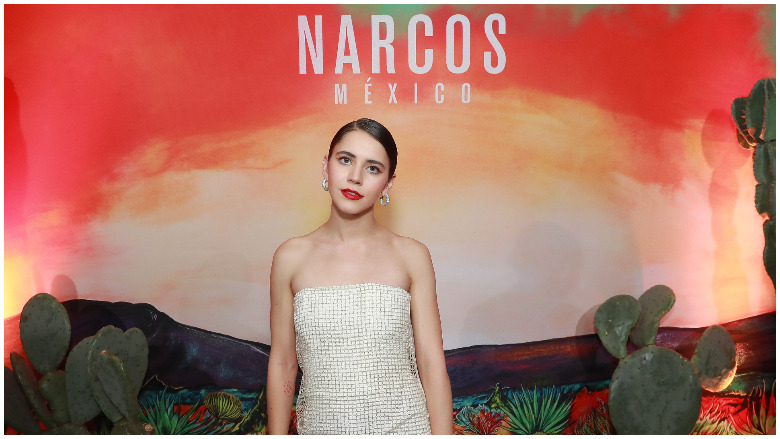
GettyRafael Caro-Quintero’s girlfriend Sofia Conesa, played by actress Tessa La.
The real-life relationship between Sara Cosio and Rafael Caro-Quintero was a dramatic one.
According to an old article in Playboy Magazine, when Caro-Quintero was arrested in the 1980s, he was at the side of a woman. “I’m not kidnapped! I am in love with Caro Quintero,” the woman, whose full name was Sara Cristina Cosío Gaona, “told the commando that broke into the house that she shared with Rafael Caro Quintero that morning,” according to Playboy. (You can see a photo of her here).
Sara, known as Sarita, did come from a political family. “Sarita is the daughter of a former education secretary in Jalisco and is the niece of former governor Guillermo Cosío Vidaurri,” Playboy reported. They met at a party, and her father opposed the romance.
According to CapitalMexico.com, “They had fun renting fashionable nightclubs for themselves and the small group of people who accompanied them.”
The book Mexican Postcards by Carlos Monsiváis also deals with the Rafa-Sara affair at great length. According to the book, she was Sara Cosio, the niece of a politician who was then president of the ruling Institutional Revolutionary Party known as PRI. The book says the story of the pair is “pure legend” and facts mixed together with fantasy and “possible facts.” The story goes that Rafa fell in love with Sara, wanted to marry her, and did in fact “kidnap” her and took her to Sonora in 1984.
Rafa is accused of telling Sara’s father, “I am in love with your daughter and want to marry her. You had better forget her or many people in your family will die.”
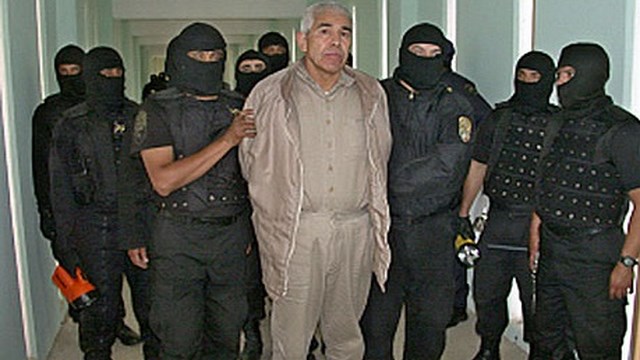
Rafael Caro Quintero
According to the book, though, Rafa returned her for Christmas and offered her parents presents, but they were refused. In 1985, according to the book, he ordered that “five luxurious cars be torched in front of the Cosio family residence.”
The love letters attributed to Sara and Rafa were also published widely, according to the book (which indicates they may be true or apocryphal.) One letter, ostensibly by Sara, read in part, “Although everything has been so crazy, you behaved yourself really well and the truth is you are really good and only pretend to be bad.”
After Camarena’s abduction, heat intensified on the cartel, and Sara’s father Cesar Octavio Cosio Vidaurri announced that she had been kidnapped by Rafa as she returned from a discotheque with his wife and son.
A traced phone call from the mansion where Rafa and Sara were holed up led to his arrest, and she did identify him to arriving DEA agents, according to the book. “Caro Quintero and Sara Cosío were…half-naked (in) bed. When they reacted, they saw their room full of uniformed men, balaclavas and assault rifles,” reports CapitalMexico.com.
Isabella Bautista
As with Sofia Conesa, there was no one named Isabella Bautista in the world of the Guadalajara Cartel. However, the show appears to have drawn from the life of another woman who earned the name “Queen of the Pacific.”
Her name is Sandra Ávila Beltrán.
She has also been called the “Queen of Cocaine.” In Narcos, Isabella is placed by actress Teresa Ruiz.
According to The Guardian, Beltran lost two husbands and a brother to the cocaine wars. All three were murdered; one was shot, one was stabbed, and one was tortured, Guardian reports.
Accused of being involved in the drug trade since the 1970s, she earned her nickname because she was accused of organizing “a fleet of tuna boats laden with 10 tons of cocaine each” headed from Mexico to the United States, according to The Guardian.
Refinery29 reports that Sandra Ávila Beltrán is related to “both Miguel Angel Felix Gallardo and Rafael Caro Quintero,” the founders of the Guadalajara cartel. CNN reports that she is Gallardo’s niece.
It’s also true, Refinery29 reports, that Beltrán “was the essential link between cartel leaders in Colombia and Mexico” during the 1980s, which is the period of time covered by Narcos: Mexico’s Season 1. In the Netflix series, Isabella Bautista provides the introductions that Felix needs to the gentlemen of Cali.
The actress, Teresa Ruiz, told Refinery29 of the role of Isabella, “There was a woman in the ‘80s that had a role of introducing cocaine into the business when it was just being led by marijuana. I knew this character was bound to come up in Narcos: Mexico, and that’s the character I wanted.”
In 2015, CNN reported that Beltrán was released from prison. Three years before, she was extradited to the U.S. and accused of “conspiring to smuggle cocaine along with Juan Diego Espinosa Ramirez, a Colombian national who was also known as ‘The Tiger,'” according to CNN. She denied the allegations, but a report alleged she was a “senior member of the Sinaloa cartel who was instrumental” in the drug trade, CNN reports, adding that she was deported to Mexico and released there when a judge determined she couldn’t be charged with the same thing in both countries. She inspired a book and a ballad and became a folk legend.
According to NBC News, “It was her romance with Espinoza Ramirez that brought together two powerful cocaine organizations, Mexico’s Sinaloa gang and Colombia’s Norte del Valle cartel.” She ran “public relations” for Sinaloa Cartel, NBC News alleged.
She once appeared on CNN’s Anderson Cooper show. You can read the transcript here. Anderson Cooper told viewers, “Beltran was born into a drug trafficking family. Two of her husbands were assassinated. Both were cops allegedly working for the cartels.” When Cooper asked Beltran whether it was possible to wipe out drug trafficking, she responded, “I don’t think so. You’d have to wipe out the government to wipe out drug trafficking.”
El Chapo

GettyJoaquín Guzmán, otherwise known as El Chapo.
Many people have been eagerly waiting for the Narcos franchise on Netflix to introduce the character of drug lord El Chapo. Joaquín “El Chapo” Guzmán is only a bit character in Narcos: Mexico because he was a bit player in the Guadalajara Cartel.
However, the rise and fall of the Guadalajara Cartel was crucial to the rise of El Chapo himself. Although he was not a co-founder of Guadalajara, he learned aspects of the drug trade by working within it, and, when the cartel fell, he used that knowledge to create what became the Sinaloa Cartel, which eventually locked down the American drug trade.

GettyEl Chapo has a bit appearance in Narcos: Mexico.
You get the sense of El Chapo hanging around the fringes but close enough to the action that he’s absorbing the inner workings of the trade. Showrunner Eric Newman told THR: “Chapo was there at the beginning, in a way. He was one of the younger guys in the Guadalajara cartel before it splintered and he and another guy were given Sinaloa as territory.” He’s played in Narcos: Mexico by Mexican actor Alejandro Edda. He’s been transformed into El Chapo through the drug lord’s signature haircut, and he’s been posting about the role on Instagram.
According to the U.S. State Department, “Joaquin Guzman-Loera, aka El Chapo, became involved in drug trafficking in the late 1980s as a trafficker and air logistics expert for the once powerful Miguel Angel Felix-Gallardo. Guzman-Loera eventually became the leader of the Sinaloa Cartel.”
The State Department added: “Guzman-Loera was arrested on June 9, 1993, in Mexico on charges related to murder and drug trafficking and was sentenced to a 20 year prison term. However, on January 19, 2001, Guzman-Loera escaped from the federal maximum security prison in Jalisco, Mexico. While on the run from Mexican authorities, Guzman-Loera reestablished himself as a top ranking member of the Sinaloa Cartel and leader of the Mexican drug trade, becoming the world’s #1 fugitive and a Forbes-listed billionaire. He was rearrested on February 22, 2014, in a modest resort hotel in Mazatlan, Sinaloa, Mexico as a result of a sustained operation. On July 11, 2015, he again escaped from Altiplano federal maximum security prison in the State of Mexico.”
According to Biography.com, El Chapo came from an abusive and underprivileged background. He was “born in the rural Mexican town of Badiraguato” and his father was described as a “violent man who was in the drug trade.” In his teenage years, Guzman was on his own and had little education, so he began selling marijuana, Biography.com reports.
He was more than a driver in his early years, even back into the 1970s, though, in real life. He was working for another drug dealer named Héctor Luis Palma Salazar in the decade before Gallardo’s cartel took off. “Guzmán oversaw the movement of drugs from his home district of Sinaloa,” the site reports. He then moved on to the Gallardo circle.
READ NEXT: See Photos of the Real Characters Behind Narcos: Mexico

